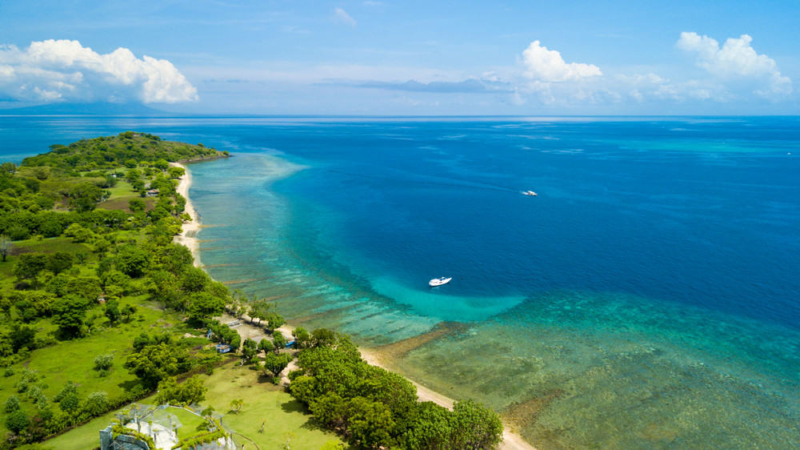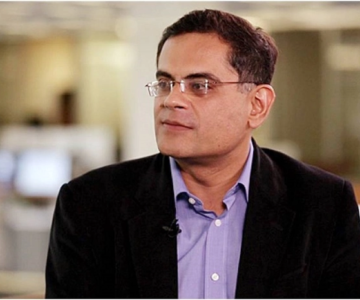Lush green vistas and the eclectic Javanese culture, the breathtaking Bali coastline and the curiously composite Islamic identity of the country made up my vague visions of Indonesia. With all these jumbled up figments of consciousness, I was given a bit of a reality check when on my first trip there an airport immigration officer asked me to leave the queue of semi-tanned Westerners and move to another room. The reason for taking me there was completely unknown.
As I waited for the local immigration honcho to arrive, I could not help but notice a letter from the Interior Ministry pasted on the wall directing airport authorities that nationals of illustrious countries such as Afghanistan, Sudan, Somalia, and Pakistan need security clearance before the issuance of visas.
Good Lord, what a rude shock it was to my cultivated notions of Islamic brotherhood and all those lovey-dovey tales in school textbooks about Pakistani and Indonesian friendship. The official explained in a roundabout way my potential security threat. Momentarily terrified, I thought about the implications for my work; more significantly I was irked that this was happening to me at the Jakarta airport, not JFK or Heathrow. I resisted emotion and an inner fight for patience ensued. Within minutes I was out of the airport in a Blue Bird Taxi. Reminders of Islamic fraternity, my calm critique of the stereotyping that occurs at the hands of Western media bloodhounds, and indeed the work-status cards, worked.
Jakarta’s tropical vegetation, though erased in the city centre, was soothing after a terribly long flight with stopovers. It was a mix of Karachi, Mumbai, Bangkok and other Asian “menace-polis” locations. The mid twentieth century architecture reminded me of the socialist modernisation that took place under President Soekarno (aka Sukarno). With its pagan past, burgeoning Islamic population, extended periods of military rule, pervasive corruption, and not to forget the gross, in-your-face inequality, indeed, Indonesia is closer to home than any other locale.
Jakarta’s population has long since exploded beyond the 10 million mark. Vast sprawl is dotted with vulgar signs of the wealth of Indonesia’s elite alongside the miseries of a hapless urban poor. Jakarta’s congestion, air-pollution and traffic choked roads are familiar Asian features. An innate buzz pervades this melting pot of old and new, culture and commercialism. The saving grace is the myriad of cultural incorporations and the sheer dynamism of the citizenry. I enjoyed the local cuisine and walked around when and where I could. The amiable temperament of the people and their eagerness to help was striking. The other prominent feature was the lack of Islamism despite the fact that this is a Muslim-majority country that houses several active fundamentalist groups. The bar signs and multitude of tourists adding to the busy urban landscape made the culture appear inclusive and liberal.
I only stayed in Jakarta for a short time as I was en route further inland to Yogyakarta (or Jogja) a city that defines the spiritual nodes of Indonesia’s most populated and influential Java Island. Java has attracted colonial settlements for its natural resources, which still abound. I bought a compilation of travel writings at the Jakarta airport, which spanned the last two centuries. Thus, I was able to learn from several voices from the past.
Yogyakarta is to Java what Lahore is to Pakistan‚ a cultural epicentre of sorts. The mood of the place is thrilling. Due to a large student population joi de vivre inhabits Jogja’s 3 million residents. It is also the centre for higher learning, dotted with academies, colleges and universities, including Indonesia’s oldest, Gadjah Mada University. The quaint ambience is heightened by the Dutch colonial buildings and the enchanting tree-lined boulevards.
In Jogja, you cannot miss the imposing, omnipresent Mount Merapi with its ever-erupting volcano and air filled with floating ash. I was stunned at the sight and even before venturing further into the innards of the city, I fell in love with it. Mount Merapi erupted lava in 2006 but the effect was less intense than the tragic earthquake in Jogja which occurred the same year.
Merapi is 10,000 years old. Villagers living on its slopes refuse to leave. They are bound by the mystical powers attributed to the mountain. These powers are seen through lightning, thundering clouds and days of ash-rain. This mysticism mixes with locals’ devotion to Islam in an unexpected, fascinating form.Javanese names are mostly Muslim; the mosques are full of devotees on Friday. After jumma prayer. I heard magical stories of Mount Merapi and its mythical powers. How are such devout Muslims so steeped in their local culture? “This is the South Asian Muslim identity crisis,” I thought.
While walking on the old High Street, full of batik, spices, and scents, I picked up another book written by an enthusiastic anthropologist, Niels Mulder, entitled, Mysticism in Java. The book is a seamless read as it traces the Javanese mysticism from the pre-historic to the modern era.According to Mulder, Buddhism and Hinduism merged with Javanese animistic belief systems. This was a fertile ground for the rise of Islam in the 10th and 11th centuries because the mystical essentials beyond the rituals were close to Islam’s message of unity of being and its emphasis on inner spirituality. The central tenet of Islam, that God is closer than the jugular vein, says it all.
Jogja is not just about tourism and Merapi. It has been the seat of ancient cultures and kingdoms. On Sunday, I headed out to a world renowned monument, the Borobudur temple complex. Built between the 7th and 8th centuries, it was the spiritual centre of Buddhism in Java. Located beneath the shadows of Mount Merapi, it is surrounded by the lush green environment of Java. I was troubled by the photographers, guides and fake Buddha-carving sellers but amused by the universal tenets of tourism. The hawkers reminded me of my visit to Taxila last year, which ended with investments in several pieces of aesthetic junk.
The imposing, authentic Buddhas were surreal and the temple was filled with an air of unspoken words. An aerial view of the Borobudur shows its geometric mandala design, which is a Hindu-Buddhist symbol for the microcosm of the universe used for focus in meditation. This monument is considered the largest ensemble of Buddhist bas-reliefs in the world, each scene an individual masterpiece.
I did not stop at Borobudur, and instead drove to Prambanan before sunset. This is a magnificent, 9th century Hindu temple designed for Shiva. It also honours Vishnu and Brahma. The Ramayana tale is woven on the reliefs. I learned that on full moon nights, the Ramayana ballet, inspired by the Hindu epic, is staged with Prambanan in the foreground. I marvelled at the richness of this land and its ethos. In Jogja, I also discovered the Lana Art Gallery packed with contemporary art and artists. The owners, a smiling couple, showed me around. I was introduced to several emerging artists of Jogja who lounged, drinking coffee and smoking clove cigarettes.
I left to place a call home and found a small shop next to the gallery. The vendor, a typical hijab-clad Indonesian woman, greeted me in English and handed over the phone card.
Women’s participation in Indonesia is extremely high, and hijab hardly gets in the way of their realisation of their self-worth. I wished I could show this to the misogynist elements back home whose first feature of an ideal Islamic system entails locking women in the house. I had my camera so I took a shot. On the way back, I stopped at a music shop. Having heard from a professor the day before about the centrality of music in Javanese existence, I was curious to acquire a representative collection.
Musical compositions are based on the principles of Javanese mysticism as they have evolved over the centuries. The notes have a repetitive rhythm and a very calming effect. It made me regret that we Pakistanis were not exposed to world cultures as a part of our early education, missing out on so many uplifting, indeed, life-changing experiences.
I have visited Yogyakarta more than once and each trip has been unique. Indonesia is a universe in itself. Hundreds of languages and dialects, thousands of islands and sub-cultures, make it a complex, rich environ. Above all, as a Pakistani, the inclusive version of Islam practised there is inspiring. It is neither at odds with local cultures nor does it re-invent history; it celebrates its traditions as much as its faith. In fact, the defunct Mutazilla movement (rationalists of the medieval times) is very much alive in the country. I was told that the recent bombings in Bali are but a temporary phenomenon and are reactions to imperial projects elsewhere. Extremism is alien to the moorings of Indonesian society. Let’s hope it remains this way because such a practice of Islamic culture is a way ahead for the Islamic world.
First Published in the Friday Times



